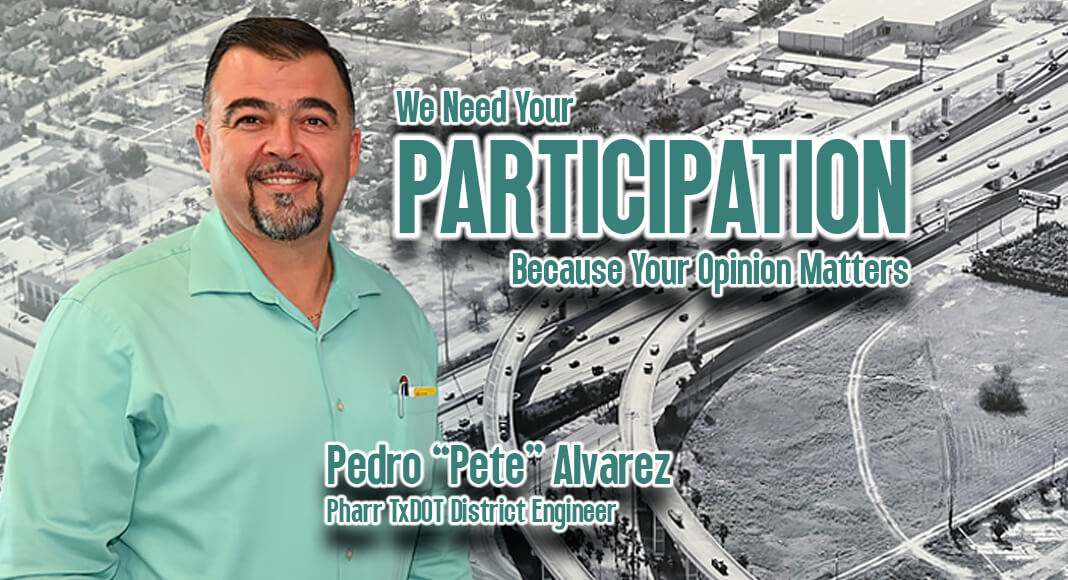
Texas Border Business
By Roberto Hugo González
In a democracy, public input is not just a formality—it’s a vital aspect of governance. Pedro “Pete” Alvarez, the Pharr District Engineer for the Texas Department of Transportation (TxDOT), has known this well for the last 29 years. His emphasis on community engagement highlights a crucial reality. If we don’t include the people who will ultimately use a system, the system will invariably fall short of meeting their needs.
The TxDOT is quite different from many other agencies in that it genuinely values public opinions and incorporates them into its decision-making processes. For example, the District Bicycle Plan—TxDOT’s ongoing project for the communities of Bryan, Laredo, Pharr, and San Antonio—is open for public comment until October 9th. The plan aims to better understand regional needs for bicyclists and aims to interconnect communities in a previously unimaginable way.
The Importance of Public Opinion
Pedro Alvarez concisely captures why public input is indispensable, emphasizing that the “end-user” will ultimately benefit or suffer from any decision made. His point is that planners and engineers can build a more effective and efficient system by understanding what routes people prefer, what types of roads they enjoy, or even what areas they connect to. This understanding cannot happen in a vacuum; it happens through rigorous community engagement.
In TxDOT’s case, not only does the public get to provide their thoughts, but these opinions influence real, tangible project changes. It could be as simple as adding more bike lanes in a certain area or as complex as re-routing a highway. Either way, the goal is to make the system as safe and efficient as possible, while also considering individual and community preferences.
How to Participate
Join TxDOT for a virtual public meeting. Visit TxDOT.gov, keyword search “District bicycle plan.”
What to expect at the meeting: Learn about TDOT’s effort to prepare your district bicycle plan, View the virtual public meeting presentation, Take the online survey and provide input.
The virtual public meeting will be conducted in English and Spanish with materials available online, we are providing a QR code for you scanning convenience.
It’s essential to know how to make your voice heard in these processes. TxDOT has made it easier than ever by providing multiple channels for public input. You can participate by going to their website and filling out surveys or by directly providing open comments. Social media platforms are also an effective way to engage with the project and spread the word among local communities.
Who Should Participate?
Alvarez noted that everyone should. While it may seem like specific groups, such as bicycle clubs, would have the most at stake in a project like the District Bicycle Plan, the reality is that a good transportation plan benefits all citizens in various ways. If you drive a car, a well-planned bike lane could mean less congestion on the road. If you use public transportation, better routes can save you time and hassle.
Safety and Planning
Alvarez said that the safety of the public is non-negotiable and stands at the forefront of all TxDOT’s projects. In the unfortunate circumstance that accidents occur, the importance of community-driven data becomes even more apparent. If there’s a high-risk zone that needs attention, public input is crucial in identifying the problem and implementing a solution.
The Clock is Ticking, But There’s Still Time
The public comment period for the District Bicycle Plan opened on September 7th and will continue until October 9th. It’s important to remember that there is still ample opportunity for the public to provide input. Your comments can shape policy, influence planning, and ultimately make your daily life better.
As Pedro Alvarez rightly puts it, “Participation is key.” Indeed, without robust public participation, even the most well-intentioned projects can miss the mark. It’s an ongoing collaboration, a dialogue that, if done correctly, can bring about great benefits for everyone involved. Make sure you are part of that conversation.
See Related Stories:
















